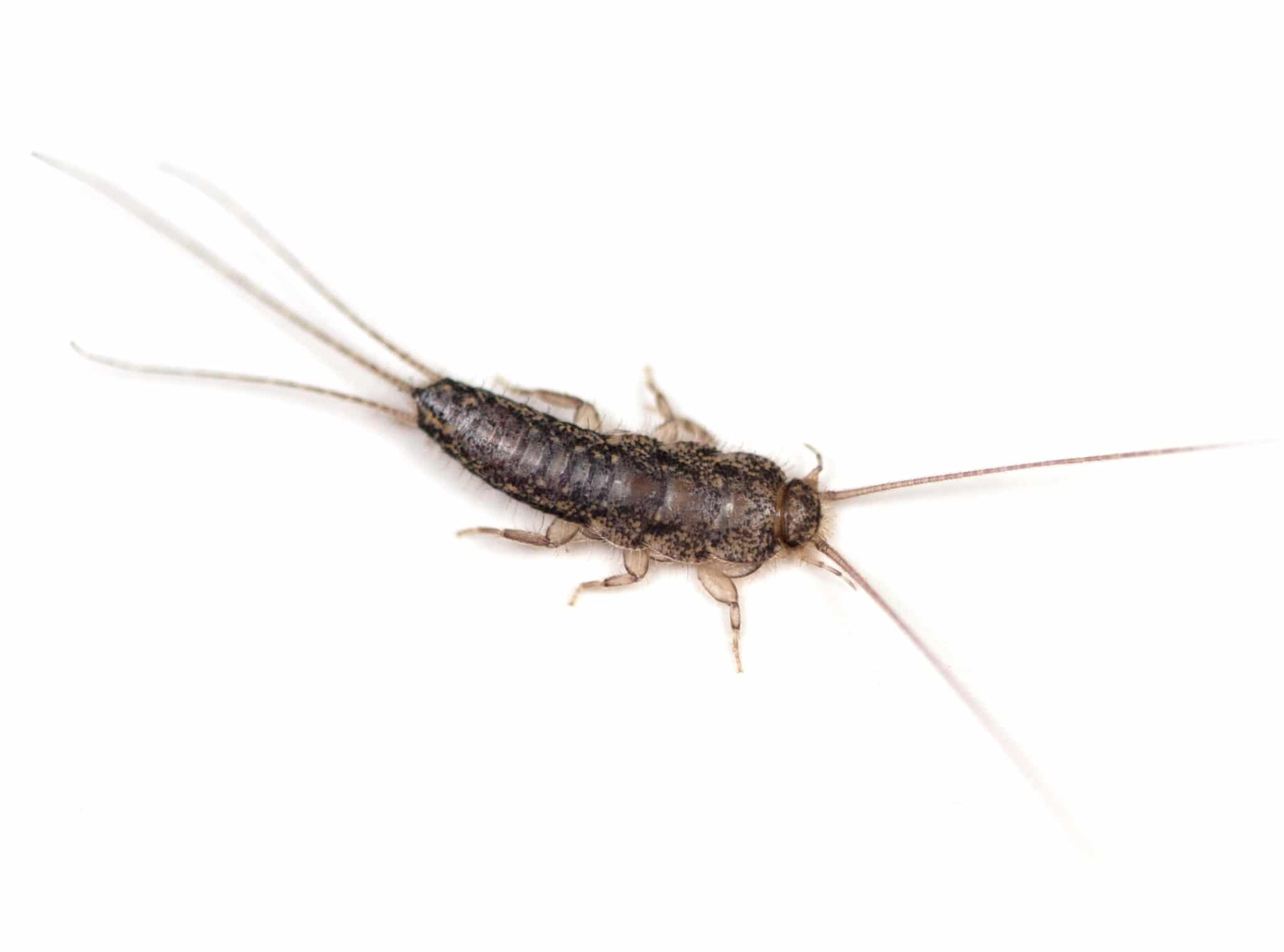Out of the corner of your eye, you see something skitter across the floor. You immediately stop what you’re doing to investigate.
Just as you expected, it’s an unwelcome creepy crawler. But what on earth is it? An elongated silver/brown bug that’s very extraterrestrial looking. The Silverfish.
But what are Silverfish bugs?
Silverfish look otherworldly enough to give anyone a small fright. If you find an infestation in your home, give Environmental Pest Management a call for a free quote.
In this article, we will answer the question, “what are silverfish bugs,” so you can identify the culprit correctly!
Silverfish Stats
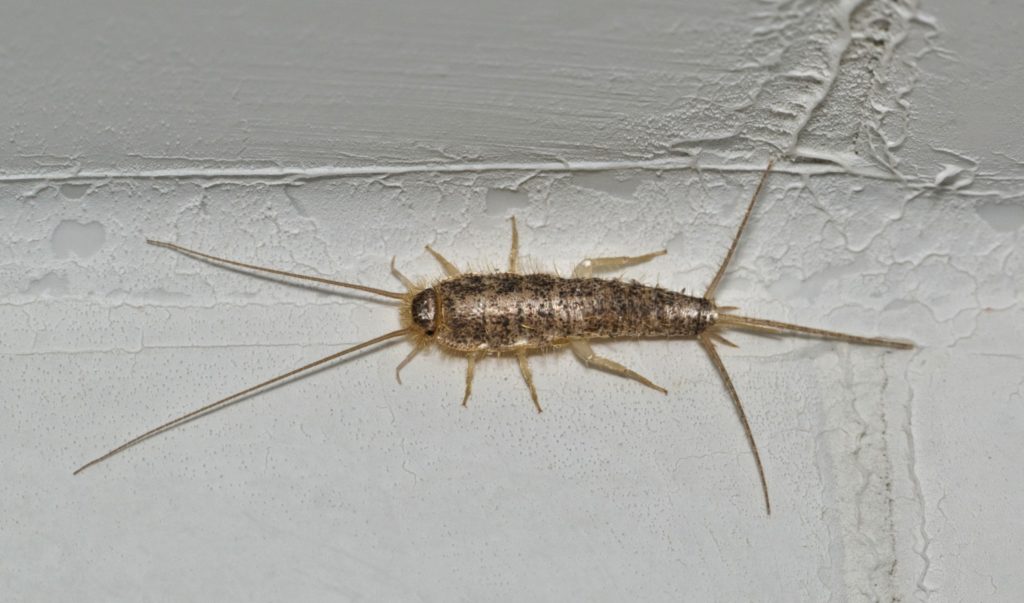
Color: They range in colors from a white sliver color to brown
Size: They can be anywhere from 12-19 mm in length
Shape: They are elongated and tear-dropped shaped.
Appearance: They have a 3 part segmented tail at the end of their abdomen
What Are Silverfish Bugs?
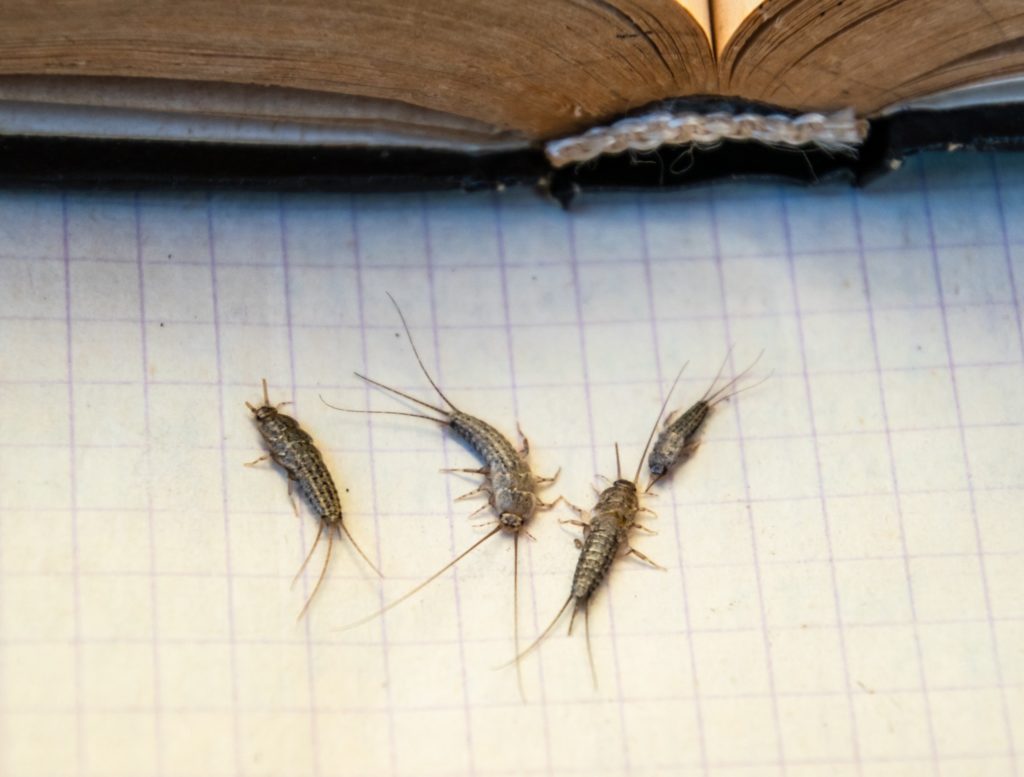
They are small, wingless bugs that get their name from their coloring and fish-like movements. Silverfish are nocturnal creatures and, like most bugs, prefer to hide in dark, moist locations.
Silverfish can grow anywhere from half an inch to an inch long. They have a lifespan of two to eight years.
Silverfish are most known for their odd appearances. They have two long antennae on their head and three-segmented bristles on their rear.
They scurry about in a side-to-side motion that resembles a fish’s movements. You will often find silverfish searching for dark, moist, humid environments to hide.
Where do Silverfish Live?
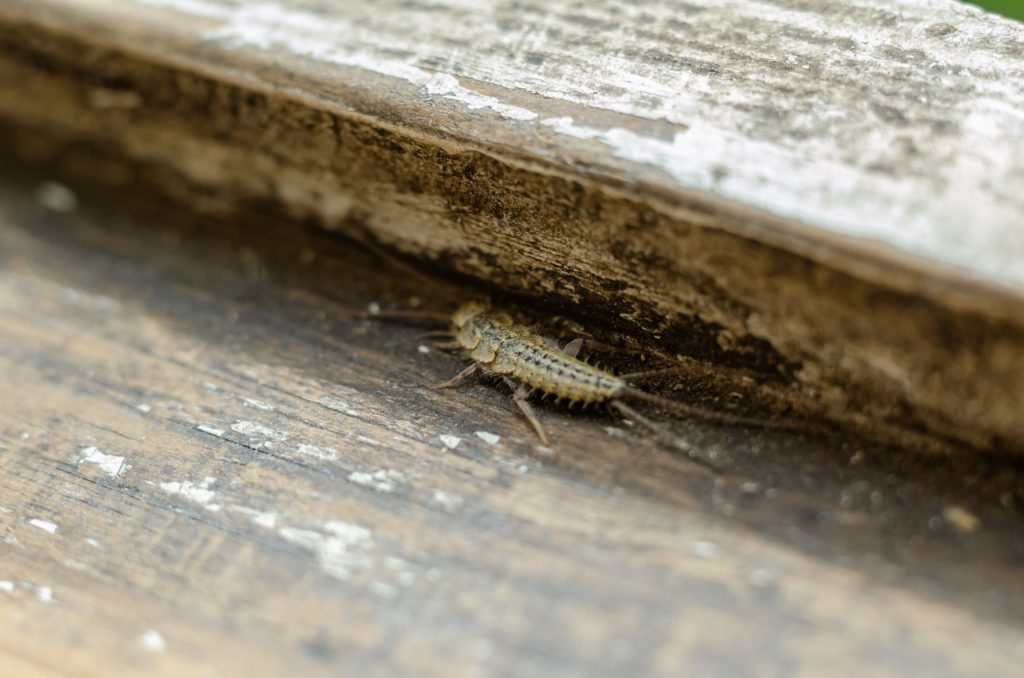
You can find Silverfish throughout most of North America. They are capable of thriving in a majority of climates.
However, as we have mentioned, they prefer dark, damp areas (75-97% humidity), such as kitchens, attics, basements, and bathrooms. They seek out damp paper, cardboard, or clothing.
You might find them living under your bathroom sinks, in your boxes stored in your garage or attic. You could also see them hiding in the corners of your humid closet.
Silverfish Reproduction
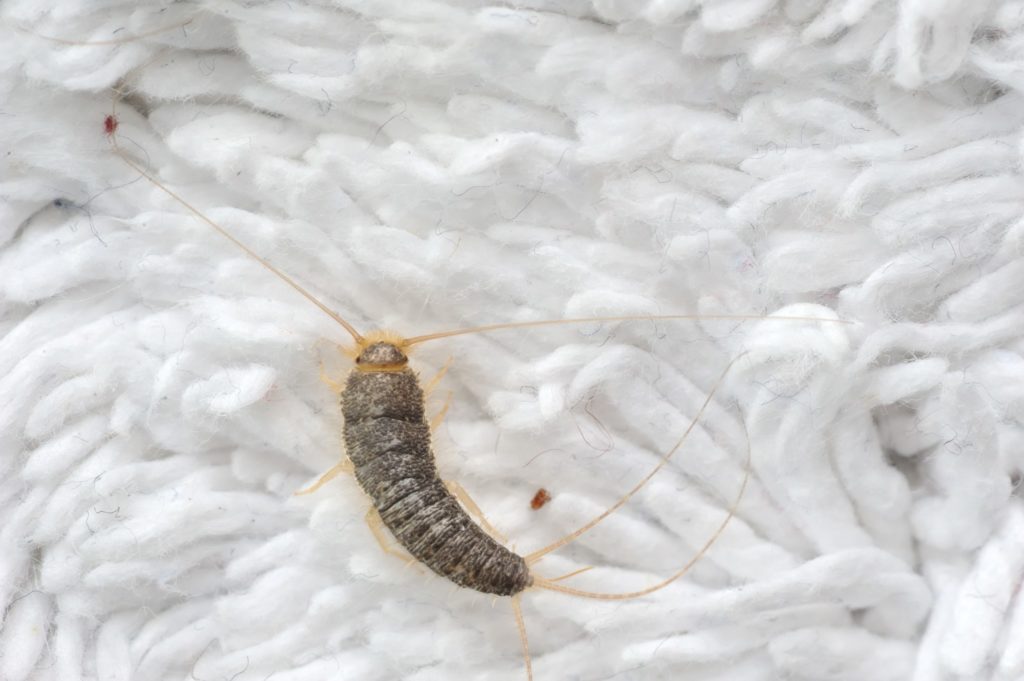
Before mating, the silverfish perform love dances. The male will lay a spermatophore, which is taken into the female’s ovipositor. Depending on the species, a female can lay anywhere from 2 to 20 eggs. The eggs can take 19-43 days to hatch, depending on climate and species.
They will deposit the eggs in cracks in the home or attic, making them difficult to spot. Silverfish are capable of producing eggs all year.
Are They Harmful Or Cause Damage?
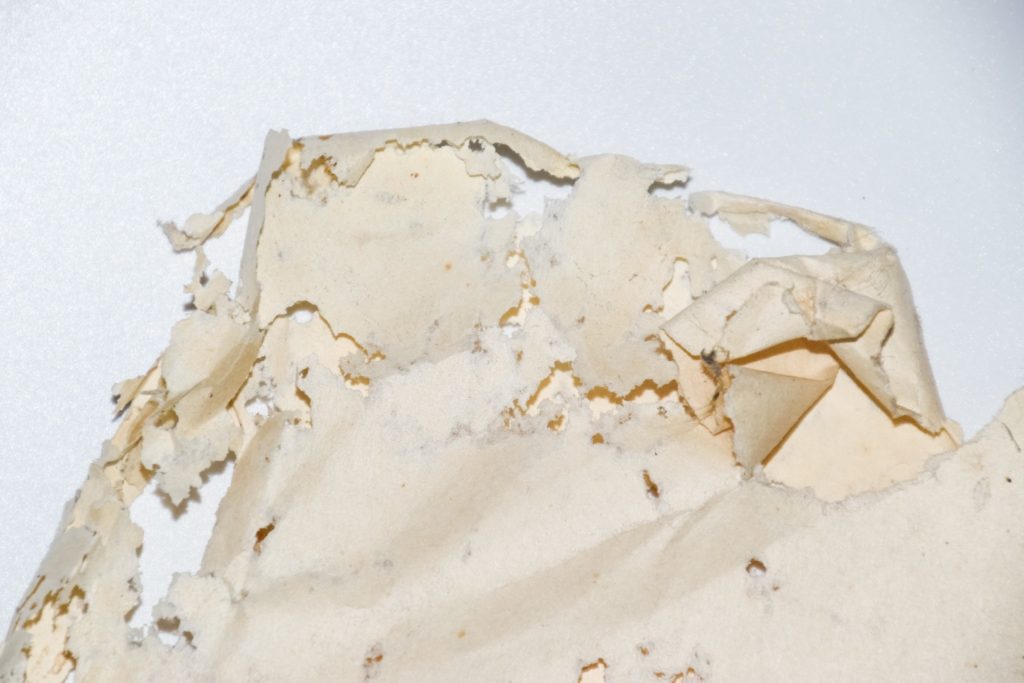
Request A Free No-Obligation Quote Today
We serve Dakota, Hennepin, Ramsey, Washington, and Anoka Counties.
We also serve Carver, Scott, Rice, Lesueur, and Steele
The short answer to this question is yes. Silverfish are not poisonous nor carry any harmful diseases. Although, there is evidence that they can cause some people to experience reactions or allergies.
A protein called tropomyosin found in their molted exoskeletons can cause an allergic reaction. You may find that you can be allergic to either their dry, molted skin or droppings.
The most irritating part about silverfish is their destructive appetites. Silverfish thrive on a diet of carbohydrates, consisting of sugar and starches.
Their food sources will consist of cotton, linen, cellulose, paper, silk, and other dead insects.
Silverfish do not discriminate when it comes to their food sources. You can find them in your pantry or tearing through your closet.
They will eat through the glue, book bindings, and pages of books and feast on clothing with natural fibers. Silverfish will not know the difference between a treasured book or piece of clothing from the toilet paper under your bathroom sink.
How to Spot a Silverfish Infestation

The most common way people find out they have a silverfish infestation is finding one on their floor, bathtub, or sink. Another indicator of a silverfish infestation is damage from their feeding.
You could also find traces of their tiny pepper-like droppings.
How to Prevent Silverfish

Unfortunately, it can be easy for a Silverfish infestation to go unnoticed. They are quick-moving, nocturnal creatures. Their secretive habits and fast reproduction can allow an infestation to get out of hand quickly.
You can take some precautions to prevent Silverfish from invading your home.
- Clean your floors and vacuum regularly to remove any leftover food crumbs. Food debris can become a potential feeding site.
- Store cereal or other grains in plastic containers to limit food sources
- Reduce clutter within the home.
- In crawl spaces, open vents to limit moisture build-up.
- Utilize dehumidifiers in basements or humid areas
- Clean your gutters and ensure water flows away from the house.
- Seal any cracks in the foundation where insects could enter.
- Eliminate entry points by sealing or caulking doors, windows, and trim.
- Replace or repair broken or missing screens.
What about Traps?
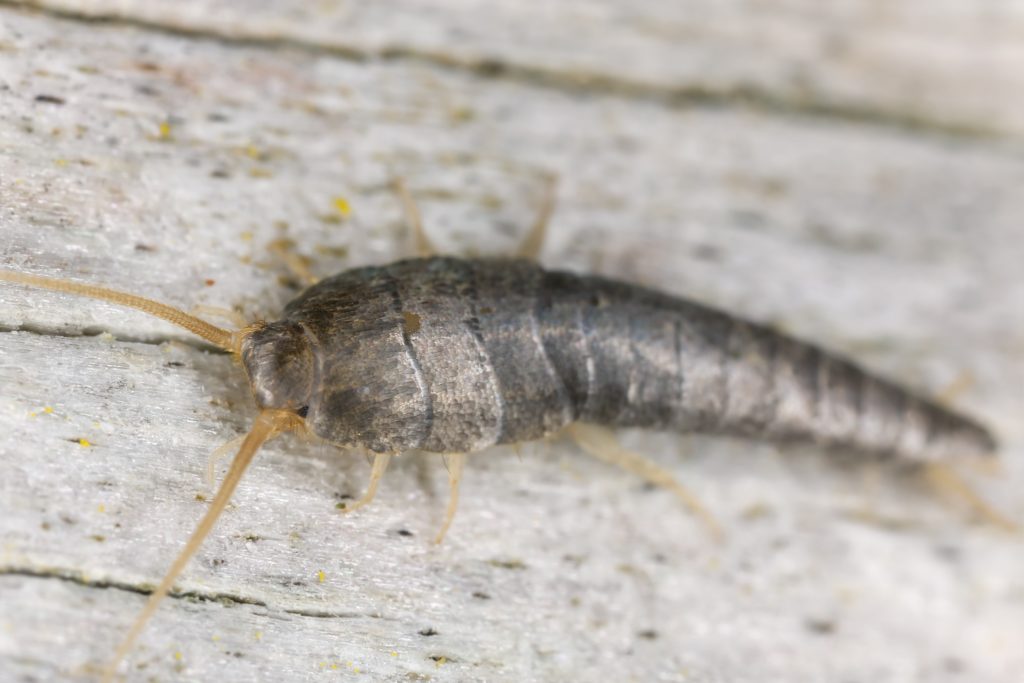
If silverfish have taken over your home, it is best to call a professional to create a plan to solve the infestation. Traps and store-bought insecticides will only kill the individual insects and not solve the widespread infestation.
The only way to rectify a silverfish infestation is to address the adults, offspring, and eggs. Many of the DIY methods falter over time, offering relief for a short time, followed by the infestation’s resurgence.
The silverfish traps you find on the market can only target a few individual insects. They are not effective in trapping an entire population.
Environmental Pest Management Can Help

At Environmental Pest Management, we use integrated pest control to solve your concerns. We will use a practical, environmentally safe approach that will be long-lasting and effective.
Eliminating just the silverfish bugs will not provide a long-term solution. We will take care of the problem at its source: the eggs.
We use our extensive knowledge of the pest’s life-cycle, habits, and feeding practices to treat your home. Your home will be pest-free and treated with environmentally conscious products.
We work with you to develop a comprehensive pest management plan that will work best within your home. Contact us today for a free inspection.

